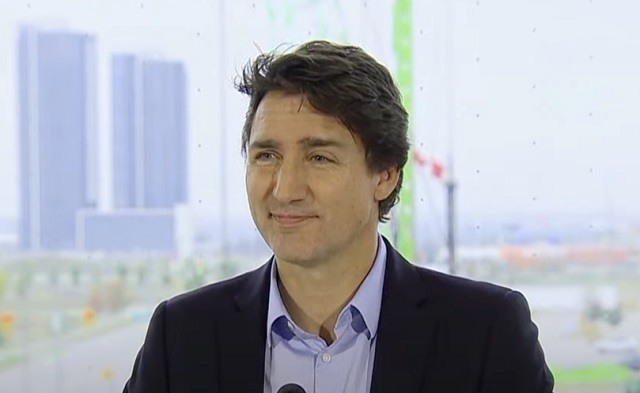National
The elements of Marc Garneau – A special report from Paul Wells
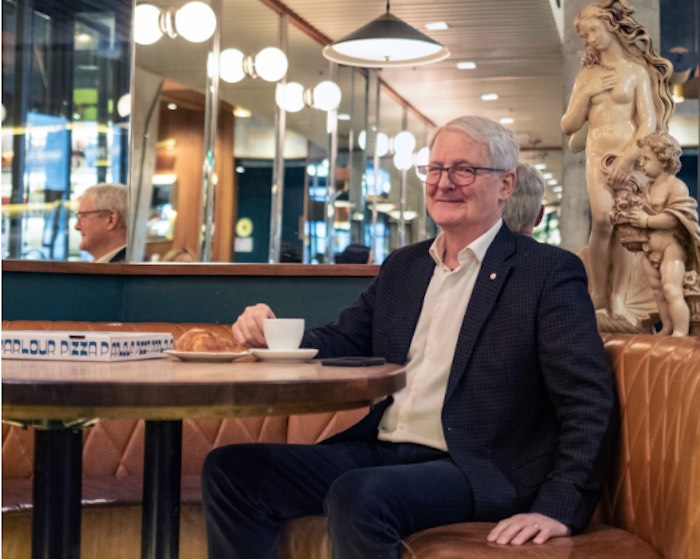
|
|
He was trained to admit every error. Then he went into politics. A feature interview with the retiring MP for Notre-Dame-de-Grâce—Westmount
Introduction
When you resign your seat in the House of Commons, you get to keep your phone for 90 days. The deadlines for cleaning out your offices on Parliament Hill and in your riding are tighter but still civilized. Soon Marc Garneau will leave his constituency office on the third floor of a nondescript office building in Westmount, the affluent anglophone enclave west of downtown Montreal, for the last time. But there’s no rush, so he met me there on Monday.
Trying to get politicians to speak frankly while they’re still in office is not always rewarding, It gets easier quickly once they leave. So I thought a visit with Garneau was worth the drive to Montreal, even though he’s been cagey in his remarks to journalists since he announced his retirement on March 8. I’ll cut to the chase: His interview with me wasn’t the work of a rebel either. Garneau remains a gentleman and a Liberal. He offered only praise for Justin Trudeau. But on several issues — communications philosophy; the handling of the Freedom Convoy occupation of Ottawa; and the proper attitude toward one’s own fallibility — he drew occasional sharp distinctions between his attitude and the Trudeau government’s.
I took the scenic route to get to that stuff. Garneau was the first Canadian to fly in space. He was a national celebrity before Trudeau finished high school. And while that’s a historic distinction, Garneau shares with many more parliamentarians a long career outside politics that preceded, and informed, his career in elected office. Not all of that is the stuff of every conversation, but this one was valedictory in tone. I thought it best to start at the beginning.
This is an unusually long post on the Paul Wells newsletter. I figured I owed everyone a good feature read. I’m leaving the paywall off. You can help spread word about the writing I do by sharing this with a friend or with your networks.
I also want to remind readers that writing this newsletter is what I do for a living. When you decide to become a paid subscriber, you help support this work. You also make it possible for me to do things too few of my colleagues elsewhere are able to do — things like travelling, or paying a professional photographer properly to illustrate my work.
1. Water
I began by asking him about the year and a half he spent as a combat systems engineer on the HMCS Algonquin. When he arrived on board, it was the newest destroyer in the Canadian Navy.
“It was what I had dreamt of from the beginning of my life,” he said. “My first love was the Navy.” His father’s family was francophone Quebecers, soldiers from way back. His father fought in the infantry in WWII and was posted in Germany for two years as the Cold War settled in. “I crossed the ocean with my parents in 1956 coming back from Germany,” he said. “We came back on a ship that was on its last voyage, the Samaria, and I just fell in love with the ocean. A few years later, we went back to England on the Empress of Britain. Those confirmed for me that I wanted to be in the Navy.”
The Algonquin, a big boat with 280 crew, spent three months doing exercises as part of STANAVFORLANT, NATO’s multinational Standing Naval Force Atlantic, which would pretend the Soviet Union was up to various kinds of risky business and figure out ways to respond. Off Puerto Rico he led tests of the new Sea Sparrow missile system. Around Newfoundland’s outports, the Algonquin took the province’s lieutenant governor on an annual tour.
Young Garneau wasn’t particularly interested in moving up the ranks. “I’m an engineer. I didn’t want to be the ship captain. I wanted to be the engineer that kept the equipment going. That may not sound very exciting. But for me that was exciting, because it’s quite a job to keep all that equipment operational in case you had to go into conflict.”
2. Air
Advancement for its own sake held no appeal. But when he saw a nondescript ad from the National Research Council calling for applicants for Canada’s first astronaut corps, that sounded better than a promotion. “Wow. The idea of possibly going into space just blew me away. At the same time, I thought my chances [of being chosen] were pretty close to zero.”
In May of 1983 there were 4,200 applicants. Six months later, six remained. It became clear pretty soon the program wasn’t just looking for technical expertise but for — well, for heroes. Or at least for people who wouldn’t screw up the illusion.
“They wanted us to write essays about why we thought that we were particularly well suited. Did we realize that we would become public figures? And were we ready for that? And did we think it was important for Canada? Medical [exams] like you’d never had before. Every single thing checked, because you had to be 100% fit. Then they brought us in for the last week and and they subjected us to a whole bunch of things.
“We had to give presentations in front of the selection board. Any attempted humour was met with a stone-cold face. I remember coming out of it thinking, ‘I’ve totally bombed this.’ But they’d all been trained not to react to anything.
“Do you remember somebody called Keith Morrison?” I sure do. TV reporter and anchor, CTV to the CBC to NBC. He actually interviewed me once, when that was an odd thing to do, and I remember he was good at it. “Well, Keith was hired for the week. And he put us through our paces, sort of doing the interview thing. So that was another thing they wanted to know, if you’d be able to do that. They had us in social settings, like a cocktail kind of thing. [They wanted to see] whether you were relatively comfortable in the company of total strangers, that kind of thing. So it’s a pretty thorough week. And by the end of that, they said, ‘Look, stand by your telephone between five and seven on the third of December and you’ll get a call.’ We’re 20 at that point. ‘It’ll either be to say, sorry you didn’t make it, or, you made it.’ And I was fortunate to be one of the six chosen. They called about six o’clock. They didn’t beat around the bush. ‘Look, you made it. Congratulations. Keep it private and we’ll trot you out on the following Monday.’ Which they did.”
When you know what happened next in Garneau’s career, all this prodding and profiling and media scrutiny takes on a different meaning. He started to meet prime ministers.
Pierre Trudeau: “Man of powerful intellect. Everyone knows that. There are warmer people than Pierre Trudeau. But very cordial.”
Brian Mulroney: “Mulroney had just been elected. He wanted to meet Ronald Reagan right away… I was summoned, along with two of my crew members, Bob Crippen and Kathryn Sullivan. Which, by the way, is a total no-no. You do not take the next crew that’s going to fly in three weeks out of their bubble of training and getting ready. Except if it’s POTUS. Reagan thought it was good idea, so we were summoned. I spent time in the Oval Office with with Reagan, whom I liked right away, and Mulroney, whom I also liked right away…. I was even at the Shamrock Summit a couple of months later in Quebec City. I wasn’t quite so happy with what PMO told me to do, which is to come up through the floor on a thing that was raising me up with smoke and lighting on me, dressed in my flight suit, and having to say, ‘Take me to your leader,’ which the crowd liked. And I thought, ‘I’m making a fool of myself here.’”
On the first trip, Garneau was a payload specialist, which meant he had responsibility for a suite of Canadian scientific experiments and little else. But he had two audiences he wanted to please. NASA was the first. “I had to make a good impression so that, based on a sample of one, they’d say, ‘Okay, he did pretty well. Let’s keep inviting Canadians to fly.’ And quite a few Canadians have flown.”
Canadians were the second audience. “I wanted Canadians to be proud of me.”
Both audiences gave him the thumbs up. Today there’s a high school in Toronto named after him. In 1992 Garneau and Chris Hadfield reported for training to become mission specialists, with much broader responsibility for mission success. It took another year of training before Garneau was eligible for his second flight, in 1996. His third and final mission was at the end of 2000. There were Russians waiting at the International Space Station when the shuttle Endeavour delivered Garneau and the others. Relations with Russia were as warm as they’ve ever been. “It was more than cordial. Frankly our lives depended on one another.”
It was a longer acquaintance with higher stakes than most of us ever experience. “One of the things I loved the most about NASA was that if you fuck up” — he paused before using the salty word — “you confess. That is the culture there.”
Probably this does not need to be spelled out, but here goes anyway. This culture of honesty was not a simple preference. Shuttle crews rode a lake of liquid fuel and twin towers of solid fuel at speeds their own ancestors could not have imagined. If a bug slipped into the system it could kill them and set spaceflight back decades, as indeed it did, twice. Owning up to error was the primary method of keeping colleagues, and the dream of spaceflight, alive.
“I did hundreds of simulations. I was the first non-American CAPCOM ever. CAPCOM’s the guy who talks to the crew in orbit for Mission Control. And we did hundreds of simulations. I covered 17 missions, just as CAPCOM. And after every simulation, where the crew, perhaps, had not picked up the problem and had not reacted properly to it, we’d do a post mortem.
“And that culture of honesty and openness, which you absolutely need in the space business — you can’t have people making excuses or trying to hide things — that’s what I love the most. And I wish it existed in all facets of life, including the one I ended up in.”
3. Earth
Garneau first ran for Parliament in 2006, just west of Montreal Island, and lost, in the first of three elections when losing was most of what Liberals did. He was interested in Outremont in a 2007 by-election. So was Justin Trudeau. Stéphane Dion was the leader, though, and he thought a political scientist was just the ticket. Dion’s designated nominee, Jocelyn Coulon, did not fare well.
In 2008 Garneau inherited the Liberal nomination, essentially a Wonka golden ticket, in Westmount, as solid a Liberal fortress as any in Canada. Only a catastrophe could lose Westmount for the Liberal. In 2011 it almost happened — Garneau beat the New Democrat by only 642 votes in the party’s worst national defeat in since Confederation. Soon Peter C. Newman had a book out proclaiming the Liberals were history.
“There’s something intimate about being only 33 [MPs in the Liberal caucus], Garneau recalled. “We got to know each other in a kind of a relationship that you don’t get when you’re 150 or 160. So I really enjoyed the collegiality of having that small, small group. Although of course I was hoping it wouldn’t last too long.”
In 2013, Garneau, who hadn’t been interested in commanding a ship, decided to try his chances with a political party. He ran for the Liberal leadership. He had competition.
“I personally believe that I had good policy that I put in the shop window. What I didn’t have — what I still don’t have — is charisma. I’m not interested in charisma, by the way. I’ve lived my life very well without charisma. And I’m not saying the electorate chooses on a superficial basis. But there was something about Justin Trudeau that was incredibly appealing to people.”
Garneau bowed to the inevitable and dropped out of the race. Eighteen months later he was co-chair of the Liberal Party’s “International Affairs Council of Advisors,” with a threefold mission: Figure out the party’s foreign policy; teach foreign policy to a leader with extremely limited experience in the field; and be seen showing interest in foreign policy. The group met regularly. “Trudeau only came occasionally to meet everybody and to sort of stir stir things up and have a really good discussion,” Garneau said.
4. Fire
As co-chair (with Andrew Leslie) of Trudeau’s Council of Advisors, Garneau figured he had a good chance to become foreign minister. He got Transport.
“You know, I’ve lived 17 years of my life abroad. And I love foreign policy. I wasn’t expecting Transport. And it turned out to be a job I loved. Although at first I thought, ‘Why’d he put me in transport?’
“When I got the call that, you know, ‘The Prime Minister wants to meet you,’ I thought — This is after the vetting process, ‘Are there any skeletons in your closet?’ — I thought, ‘What’s he going to put me in?’ I thought, Defence because of my background. I was in the regular forces. Or I thought, then, maybe Industry, because I was the president of the Canadian Space Agency and I worked for the Minister of Industry, Science and Technology at the time. And maybe even Foreign Affairs, because he’d had me in this job for the past two years. I wasn’t expecting Transport.” Garneau chuckled at the incongruity of it. “But now, after a little while, I saw the logic of it. I was in the Navy, ships, so I know the marine environment. I know the air environment. And so there is a certain logic to it. And it’s a job that I came to love.” He held the post for five and a half years. Only David Collenette and Lionel Chevrier lasted longer.
The new governing caucus had five times as many MPs as the Liberal caucus it replaced. “It was a heady experience,” Garneau said. “And there was a certain amount of chaos, which is understandable because it takes a couple of years to learn the basics of your job.”
It must have been a management challenge for the Prime Minister’s Office, I ventured. To have a finance minister, health minister, justice minister, defence minister who’d never been Members of Parliament before, let alone cabinet ministers. How did the PMO handle that? “It was a little bit like when you see kindergarten children all tied up with ropes, going down the street.”
Did the control ever chafe? “I had some times where I felt one way and and I felt that the centre did not necessarily agree with it. Yeah. That comes from the dynamic. If you’ve got your mandate letter, and you interpret that mandate letter the way you feel it must be implemented — you know, the vast majority of the time, no problem. But there was the odd occasion. You’ll forgive me if I don’t go into details on it. But I was very conscious of the fact [that] you have a chief of staff, your chief of staff is a key person for you. But that chief of staff reports to you, but also must report to the chief of staff of the Prime Minister. I made an indirect reference to it in my parting speech, that I sometimes made their life difficult because I might have wanted to go one way whilst the center didn’t necessarily want to go that way.”
We had been talking for more than an hour. I asked Garneau about the Freedom Convoy of January and February 2022, which has been on my mind. Specifically, I asked Garneau about his Liberal caucus colleague Joël Lightbound, who held an astonishing news conference in the second week of the Ottawa siege to say the Liberals’ COVID policy “stigmatizes and divides people.”
“I definitely took very much note of it,” he said of Lightbound’s surgical sortie. “Some of what he said is true. There were people on the Hill that were not extremists. They were just there because they felt that their rights were being not respected.” He faced his share of verbal abuse as he made his way to and from the Hill, but even still —
He paused. “I’ll be very candid. I don’t think we handled it as well as we could have.”
In what sense? “I think there was a sense that, ‘We’re not going to talk to you people. You’re just a bunch of troublemakers.’ I had always been brought up to not avoid dealing with difficult issues. This was an incredibly difficult issue.” Another pause. “So that’s just my personal comment.”
The other thing I wanted to ask him about was the tremendous controversy he and two other back-bench Liberals have stirred up over the interaction between Quebec’s newly beefed-up language law and Bill C-13, which proposes amendments to the federal Official Languages Act. This has put Garneau and his colleagues squarely on the side of Montreal’s anglophone population against a majority of Quebec’s elected politicians. And it’s brought Garneau in for some unaccustomed criticism. Barely two weeks before he resigned, he was complaining about the rough ride from Quebec commentators on Twitter.

12:40 PM ∙ Feb 18, 2023
Garneau’s comments on this were long, and would constitute inside baseball for most readers outside Quebec, but he didn’t like seeing Quebec’s language laws incorporated by reference into a federal bill. “I have very rarely disagreed with my party, but I disagreed with them on that.” It got worse for Garneau when he read 88 amendments introduced by the Bloc Québécois, five of which said that in case of a conflict between federal and provincial legislation, Quebec’s should predominate. Those amendments were eventually rejected, but by then Garneau was already on the record with his concerns. “I’m always ready to face criticism, but it got personal. And I think that’s sad.”
The controversy has been a much bigger deal inside Quebec than outside, but Garneau insisted it’s not why he’s leaving politics.
The reason I’m leaving is because I made that promise to my wife, and to my family. I actually told him after the 2019 election that that was my last election. I had been reappointed to Transport. And I thought, ‘Okay, this is a lovely way to finish.’
“Then in January of 2021, to my great surprise, the Prime Minister [shuffled Garneau.] I think it was motivated by the fact that Navdeep Bains pulled out. The Prime Minister, I personally think that he said, ‘Okay, I want François-Philippe to take over from that. And there’s a bit of musical chairs and I ended up in foreign affairs.
“But seven months later, an election was announced. And I felt, in all good conscience, that after seven months in that portfolio — to now say, ‘Sorry, I’m leaving,’ when I had been the fourth appointed in under six years, it just wouldn’t have been right.
“Now, if the prime minister had told me, ‘Mark, after this election, you won’t be in the cabinet,’ I wouldn’t have run. But he didn’t tell me that.
“I ran hoping to go back into that job. Because Lord knows there were things that I wanted to do. With respect to Afghanistan, China, the Indo-Pacific strategy, I’d been working all that stuff. But the bottom line was that he said, ‘You’re not in cabinet anymore.’
“And so, at this point, I felt it would be really not acceptable for me to say, ‘Okay, thank you for electing me three weeks ago, I’m leaving.’ So I felt I needed to put in some time. To my great personal satisfaction, I was given two things that I really enjoyed. One was to be chair of the Indigenous and Northern Affairs Committee, which I think has an important role with respect to reconciliation. And the other one was kind of unexpected… medical assistance in dying, where I was co-chair with a senator on this special mixed committee.”
That committee presented its final report in February. Garneau resigned three weeks later. He was already in the history books before he ever ran for office. Would he run now, in the atmosphere of today’s politics, if he were just starting out? Is there still room in politics for an engineer who just wants to make things work better? These are eternal questions, and I had already asked Garneau enough questions for one day.
Business
Canada’s economy has stagnated despite Ottawa’s spin

From the Fraser Institute
By Ben Eisen, Milagros Palacios and Lawrence Schembri
Canada’s inflation-adjusted per-person annual economic growth rate (0.7 per cent) is meaningfully worse than the G7 average (1.0 per cent) over this same period. The gap with the U.S. (1.2 per cent) is even larger. Only Italy performed worse than Canada.
Growth in gross domestic product (GDP), the total value of all goods and services produced in the economy annually, is one of the most frequently cited indicators of Canada’s economic performance. Journalists, politicians and analysts often compare various measures of Canada’s total GDP growth to other countries, or to Canada’s past performance, to assess the health of the economy and living standards. However, this statistic is misleading as a measure of living standards when population growth rates vary greatly across countries or over time.
Federal Finance Minister Chrystia Freeland, for example, recently boasted that Canada had experienced the “strongest economic growth in the G7” in 2022. Although the Trudeau government often uses international comparisons on aggregate GDP growth as evidence of economic success, it’s not the first to do so. In 2015, then-prime minister Stephen Harper said Canada’s GDP growth was “head and shoulders above all our G7 partners over the long term.”
Unfortunately, such statements do more to obscure public understanding of Canada’s economic performance than enlighten it. In reality, aggregate GDP growth statistics are not driven by productivity improvements and do not reflect rising living standards. Instead, they’re primarily the result of differences in population and labour force growth. In other words, they aren’t primarily the result of Canadians becoming better at producing goods and services (i.e. productivity) and thus generating more income for their families. Instead, they primarily reflect the fact that there are simply more people working, which increases the total amount of goods and services produced but doesn’t necessarily translate into increased living standards.
Let’s look at the numbers. Canada’s annual average GDP growth (with no adjustment for population) from 2000 to 2023 was the second-highest in the G7 at 1.8 per cent, just behind the United States at 1.9 per cent. That sounds good, until you make a simple adjustment for population changes by comparing GDP per person. Then a completely different story emerges.
Canada’s inflation-adjusted per-person annual economic growth rate (0.7 per cent) is meaningfully worse than the G7 average (1.0 per cent) over this same period. The gap with the U.S. (1.2 per cent) is even larger. Only Italy performed worse than Canada.
Why the inversion of results from good to bad? Because Canada has had by far the fastest population growth rate in the G7, growing at an annualized rate of 1.1 per cent—more than twice the annual population growth rate of the G7 as a whole at 0.5 per cent. In aggregate, Canada’s population increased by 29.8 per cent during this time period compared to just 11.5 per cent in the entire G7.
Clearly, aggregate GDP growth is a poor tool for international comparisons. It’s also not a good way to assess changes in Canada’s performance over time because Canada’s rate of population growth has not been constant. Starting in 2016, sharply higher rates of immigration have led to a pronounced increase in population growth. This increase has effectively partially obscured historically weak economic growth per person over the same period.
Specifically, from 2015 to 2023, under the Trudeau government, inflation-adjusted per-person economic growth averaged just 0.3 per cent. For historical perspective, per-person economic growth was 0.8 per cent annually under Brian Mulroney, 2.4 per cent under Jean Chrétien and 2.0 per cent under Paul Martin.
Due to Canada’s sharp increase in population growth in recent years, aggregate GDP growth is a misleading indicator for comparing economic growth performance across countries or time periods. Canada is not leading the G7, or doing well in historical terms, when it comes to economic growth measures that make simple adjustments for our rapidly growing population. In reality, we’ve become a growth laggard and our living standards have largely stagnated for the better part of a decade.
Authors:
Fraser Institute
Powerful players count on corruption of ideal carbon tax

From the Fraser Institute
Prime Minister Trudeau recently whipped out the big guns of rhetoric and said the premiers of Alberta, Nova Scotia, New Brunswick, Newfoundland and Labrador, Ontario, Prince Edward Island and Saskatchewan are “misleading” Canadians and “not telling the truth” about the carbon tax. Also recently, a group of economists circulated a one-sided open letter extolling the virtues of carbon pricing.
Not to be left out, a few of us at the Fraser Institute recently debated whether the carbon tax should or could be reformed. Ross McKitrick and Elmira Aliakbari argued that while the existing carbon tax regime is badly marred by numerous greenhouse gas (GHG) regulations and mandates, is incompletely revenue-neutral, lacks uniformity across the economy and society, is set at an arbitrary price and so on, it remains repairable. “Of all the options,” they write, “it is widely acknowledged that a carbon tax allows the most flexibility and cost-effectiveness in the pursuit of society’s climate goals. The federal government has an opportunity to fix the shortcomings of its carbon tax plan and mitigate some of its associated economic costs.”
I argued, by contrast, that due to various incentives, Canada’s relevant decision-makers (politicians, regulators and big business) would all resist any reforms to the carbon tax that might bring it into the “ideal form” taught in schools of economics. To these groups, corruption of the “ideal carbon tax” is not a bug, it’s a feature.
Thus, governments face the constant allure of diverting tax revenues to favour one constituency over another. In the case of the carbon tax, Quebec is the big winner here. Atlantic Canada was also recently won by having its home heating oil exempted from carbon pricing (while out in the frosty plains, those using natural gas heating will feel the tax’s pinch).
Regulators, well, they live or die by the maintenance and growth of regulation. And when it comes to climate change, as McKitrick recently observed in a separate commentary, we’re not talking about only a few regulations. Canada has “clean fuel regulations, the oil-and-gas-sector emissions cap, the electricity sector coal phase-out, strict energy efficiency rules for new and existing buildings, new performance mandates for natural gas-fired generation plants, the regulatory blockade against liquified natural gas export facilities” and many more. All of these, he noted, are “boulders” blocking the implementation of an ideal carbon tax.
Finally, big business (such as Stellantis-LG, Volkswagen, Ford, Northvolt and others), which have been the recipients of subsidies for GHG-reducing activities, don’t want to see the driver of those subsidies (GHG regulations) repealed. And that’s only in the electric vehicle space. Governments also heavily subsidize wind and solar power businesses who get a 30 per cent investment tax credit though 2034. They also don’t want to see the underlying regulatory structures that justify the tax credit go away.
Clearly, all governments that tax GHG emissions divert some or all of the revenues raised into their general budgets, and none have removed regulations (or even reduced the rate of regulation) after implementing carbon-pricing. Yet many economists cling to the idea that carbon taxes are either fine as they are or can be reformed with modest tweaks. This is the great carbon-pricing will o’ the wisp, leading Canadian climate policy into a perilous swamp.
Author:
-

 COVID-192 days ago
COVID-192 days agoPro-freedom Canadian nurse gets two years probation for protesting COVID restrictions
-
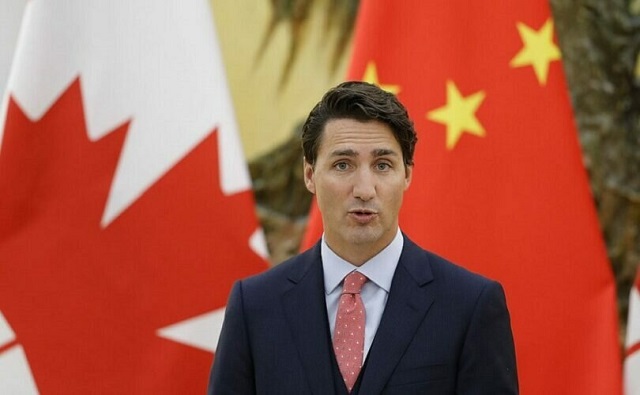
 espionage2 days ago
espionage2 days agoTrudeau’s office was warned that Chinese agents posed ‘existential threat’ to Canada: secret memo
-
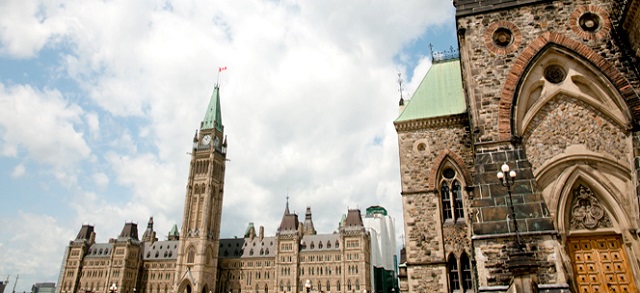
 Economy2 days ago
Economy2 days agoMassive deficits send debt interest charges soaring
-

 Business1 day ago
Business1 day agoBusiness investment key to addressing Canada’s productivity crisis
-

 International1 day ago
International1 day agoBrussels NatCon conference will continue freely after court overturns police barricade
-

 Jordan Peterson1 day ago
Jordan Peterson1 day agoJordan Peterson slams CBC for only interviewing pro-LGBT doctors about UK report on child ‘sex changes’
-
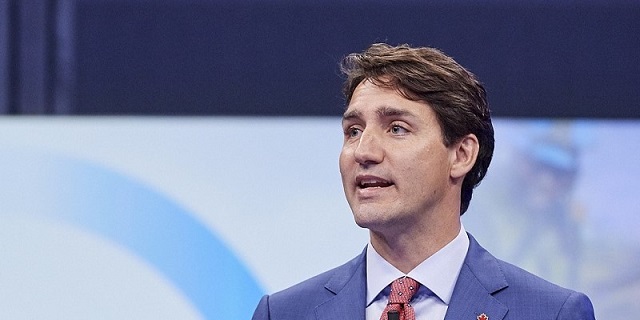
 Business1 day ago
Business1 day agoFederal budget fails to ‘break the glass’ on Canada’s economic growth crisis
-

 Frontier Centre for Public Policy1 day ago
Frontier Centre for Public Policy1 day agoThe Smallwood solution










